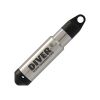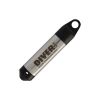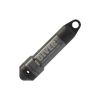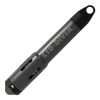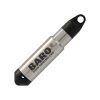Van Essen Diver-Mate Data Download Unit
Features
- Supplied with 16 GB memory card
- Built-in battery, rechargeable through USB-C
- Works seamlessly with new Diver-App
- Free ground shipping
- Expedited repair and warranty service
- Lifetime technical support
- More
Overview
The Van Essen Diver-Mate Data Download Unit is designed for simple and fast download of Diver groundwater data logger data, increasing download efficiency while reducing data transfer errors. A Diver DXT-Cable is used for connecting it to the Diver. Equipped with Bluetooth, it offers a wealth of possibilities for forwarding data, cloud storage and assessing the status of the well. The Diver-Mate also shows the DXT Cable signal quality and the Diver data download progress if Diver and cable are working correctly.
Data Collection
With 16 GB non-volatile memory drive, the Diver-Mate has more than sufficient capacity to store the data of thousands of Divers. Connect the Diver-Mate to a laptop using the supplied USB-C cable. The collected field data can easily be imported by Diver-Office for further processing. The files on the Diver-Mate can also be accessed through Windows File Explorer like any USB flash drive.
| Dimensions | 79 mm × 132 mm × 24 mm (W×L×H) |
| Weight | ~152 grams |
| Protection Classification | IP41 |
| Memory | 16 GB |
| Battery | Rechargeable Lithium Polymer |
| Battery Life | 10 days (single charge, dependent on usage) |
| Barometric Pressure Sensor | 400 to 1100 cmH2O |
In The News
Combating Water Insecurity in Saskatchewan with Real-Time Data
The prairies of Saskatchewan can be described as one of the least water-secure parts of Canada, making water quality monitoring essential for informed resource management in a region already facing water insecurity. While natural physical properties worsen some of the poor water quality conditions in the region, others are connected to land use. Having grown up spending summers on the shores of Lake Huron, Helen Baulch, an associate professor at the School of Environment and Sustainability at the University of Saskatchewan , has always been dedicated to the protection of water resources. Looking back fondly at her childhood playing along the shore, Baulch also recalls the invasion of quagga mussels during her teenage years and watching the lake change as a result.
Read MoreSeametrics Turbo Turbidity Logger: Boost your Turbidity Monitoring
The Seametrics Turbo Turbidity Logger is a self-cleaning turbidity sensor capable of internally logging over 260,000 data records. The sensor enables researchers, compliance officers, and contractors to monitor turbidity in various applications, from construction and dredging sites to wastewater effluent. Due to its narrow width, this device can be deployed in a range of areas, from small well spaces to rivers and streams. The stainless steel housing and built-in wiper allow the sensor to withstand long-term deployments and reduce the need for maintenance trips. The logger accurately records temperature and turbidity up to a depth of 50 meters.
Read MoreCollecting Data at the Top of the World: How Scientists Retrieve Glacial Ice Cores
A helicopter touches down in the small town of Sicuani, Peru, at an elevation of 11,644 feet. Earlier that day, a boxcar brought fuel, drills, food, and other equipment for a glacial expedition. The year is 1979, and glaciologist Lonnie Thompson is preparing to lead a team to the Quelccaya ice cap in hopes of becoming the first scientists to drill an ice core sample from this glacier. The only problem? The glacier is located at 19,000 feet in one of the most remote areas of the world. The helicopter takes off from the town, but the thin atmosphere at that elevation does not allow it to safely touch down on the ice– due to the aircraft’s weight, and it becomes unstable when the air is less dense.
Read More





















